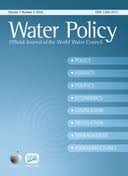Potential Water Savings Associated with Agricultural Water Efficiency Improvements: A Case Study of California

Potential Water Savings Associated with Agricultural Water Efficiency Improvements: A Case Study of California
In this article published in Water Policy, the Pacific Institute analyses the potential for water savings from irrigation efficiency improvements in California. The article models water savings associated with three efficiency scenarios (efficient irrigation, improved irrigation scheduling, and regulated deficit irrigation) in wet, average, and dry water years. The three scenarios evaluated each show potential for significant water savings. In total, these scenarios could reduce water applied to California agriculture by 17%, or reduce water consumed by California agriculture by 13%. The results indicate that water conservation and efficiency improvements are particularly effective in dry years, when agricultural water demand is greater and conflicts over scarce water resources are more severe. Available for purchase from International Water Association (IWA) Publishing.Overview

